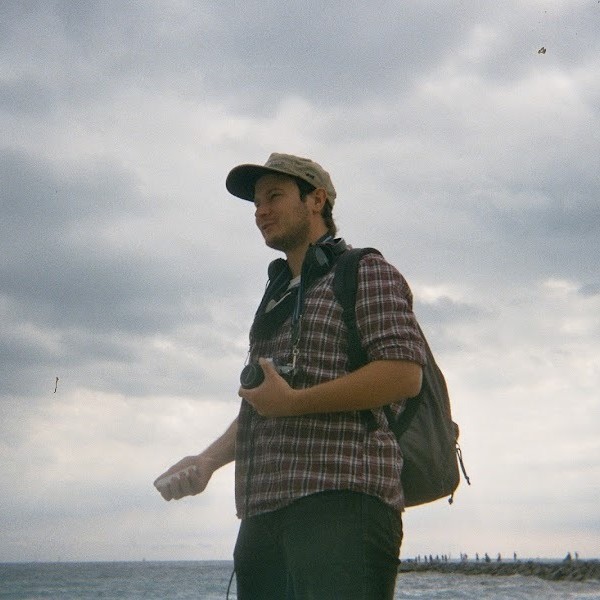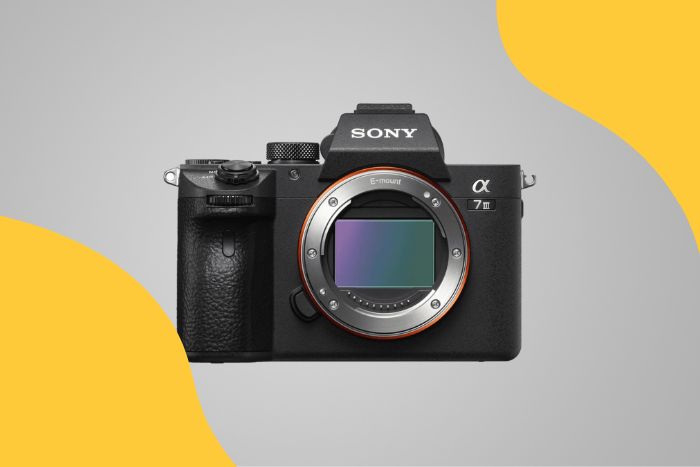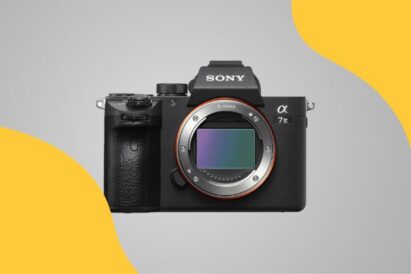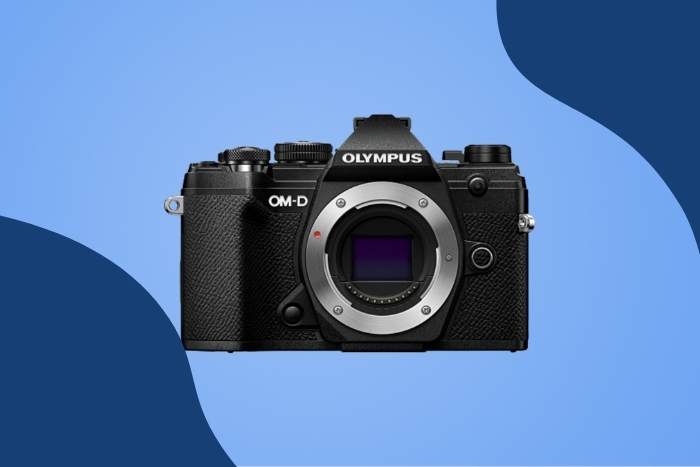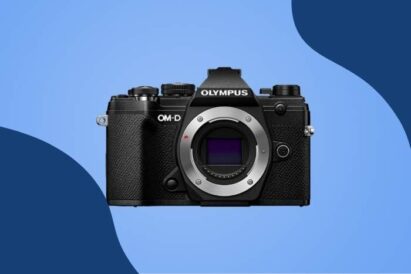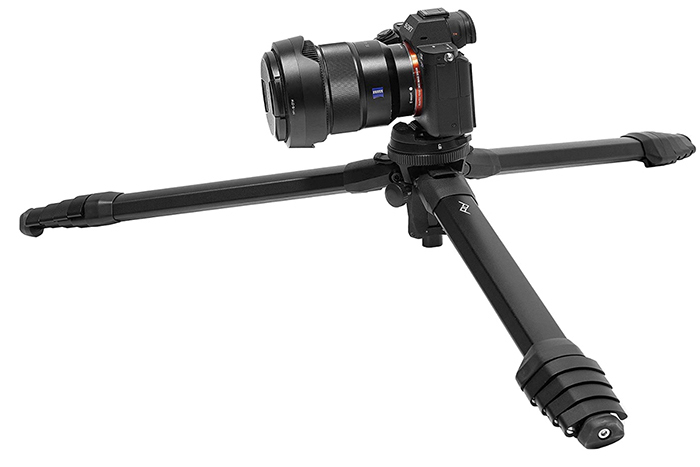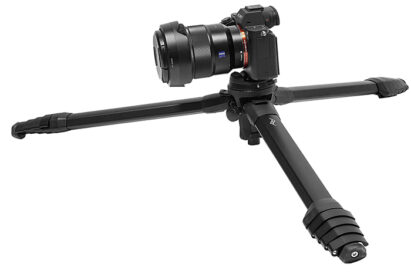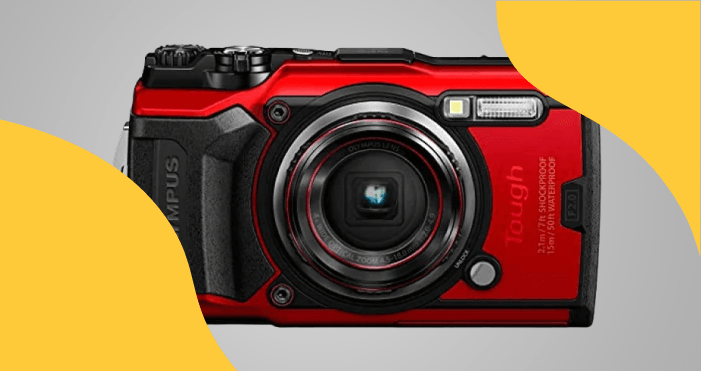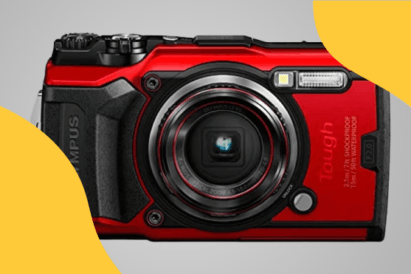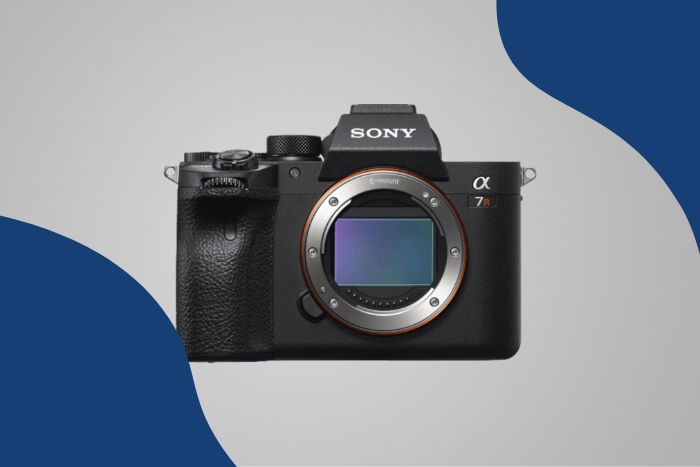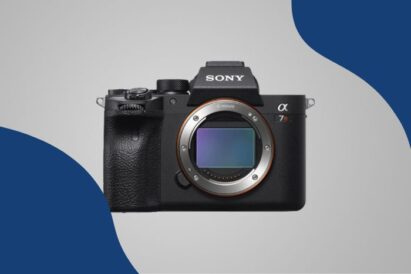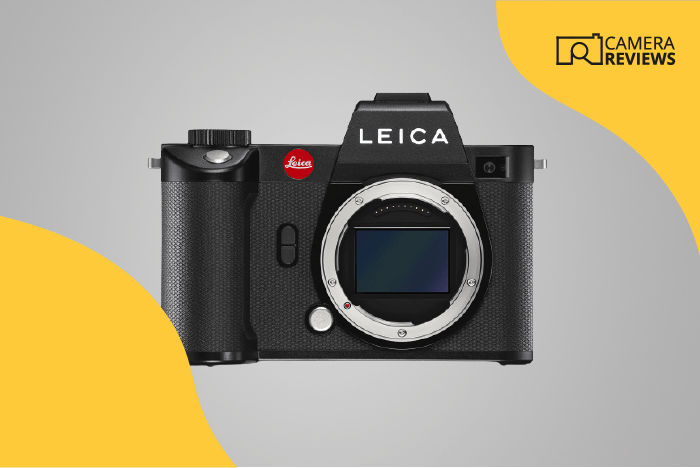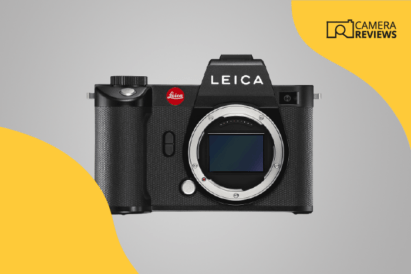Finding the best lightweight camera for hiking and travel isn’t easy. You need the best camera to capture the magic moments from your next adventure. You don’t want a camera that weighs you down. And you need to know it can handle the hard life of a traveler.
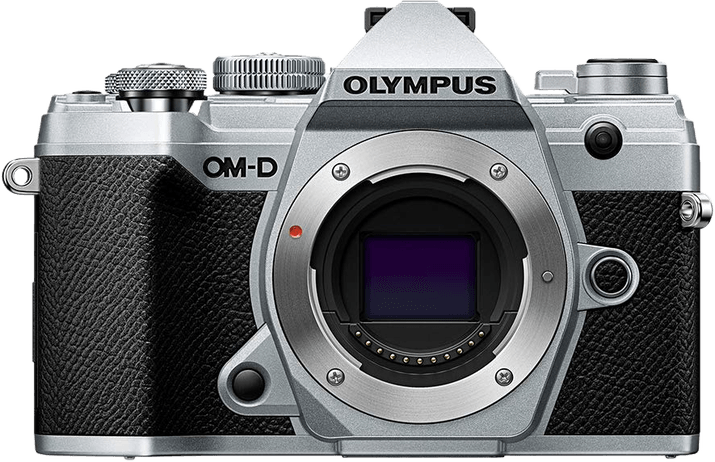
Olympus OM-D E-M5 Mark III
We’ve got a collection of the best lightweight cameras that are ideal for travel and hiking. It includes DSLR and mirrorless cameras. And we have bridge and compact cameras too. They are all lightweight cameras. And they have features that’ll get the best out of your hiking and travel photography.
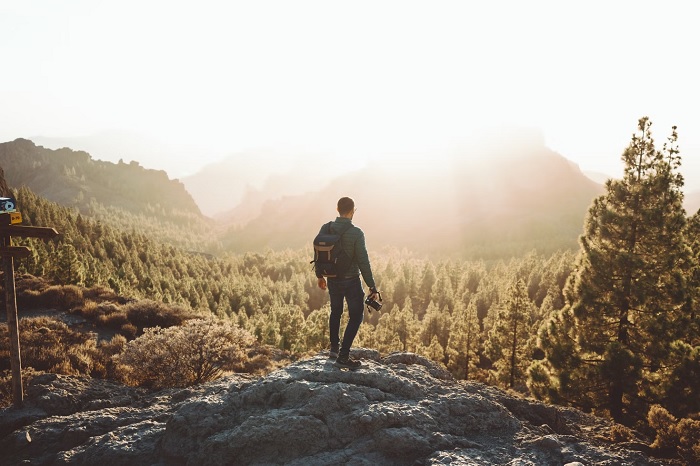
What is the Best Lightweight Camera for Travel and Hiking?
You need to consider a few things when buying a lightweight camera for travel. Image quality is very important. You need a camera that captures the world you find in all its glory. And backpacking cameras always need to be lightweight and portable. You don’t want anything weighing you down.
Video features are becoming just as important for modern travel photographers. And we’ve included some cameras dedicated to video creation. A rugged and weatherproof body is important in a camera for hiking. And autofocus and image stabilization are other great features to look out for.

- Compact and weather-sealed camera body
- 50 MP High-Res Shot mode
- 4K video quality and 120 fps frame rate for slow-mo
- 30 fps max burst rate
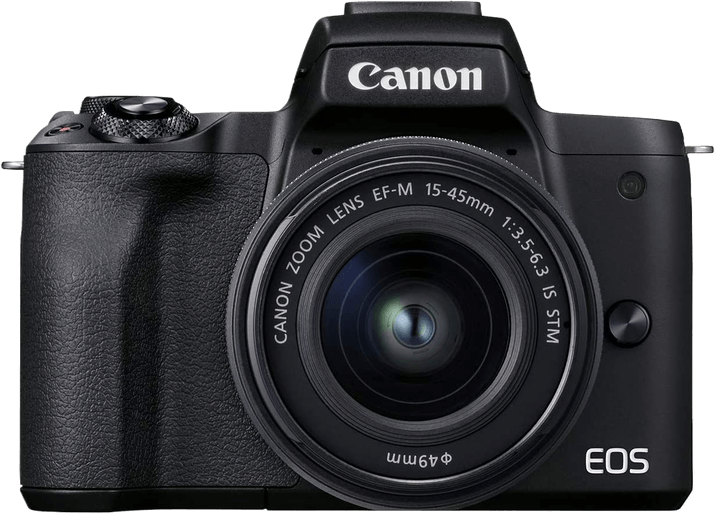
- Excellent image quality from the 24.1 MP sensor
- Face and eye detection and tracking AF
- Built-in image stabilization
- 4K video recording and webcam abilities
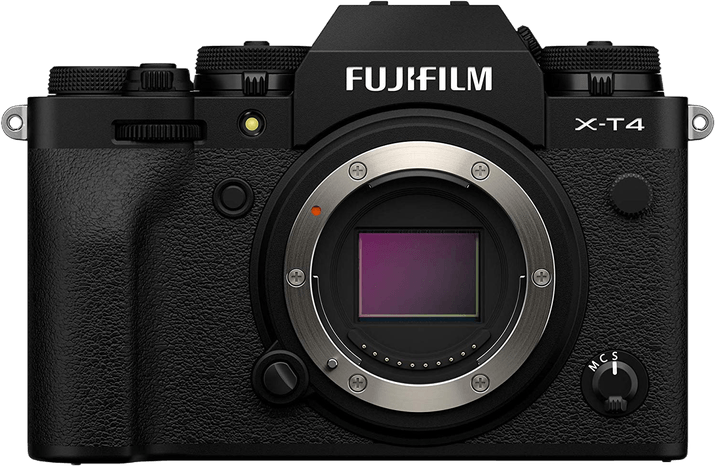
- 26 MP from the APS-C sensor
- 20 fps max burst speed
- Brilliant AF system for tracking moving subjects
- Tough, weather-sealed body
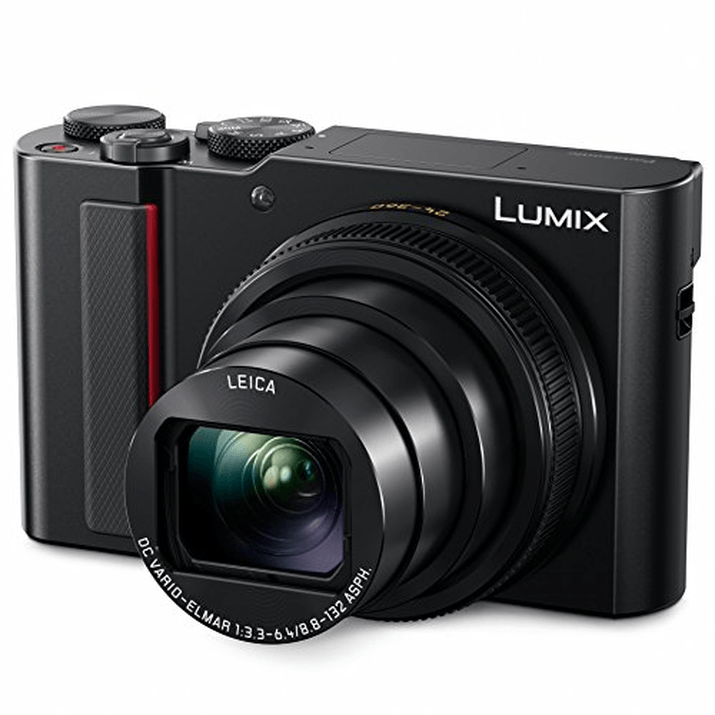
- 20 MP from a 1-inch sensor
- Long-lasting battery life
- Incredible 15x zoom from the Leica lens
- Built-in image stabilization
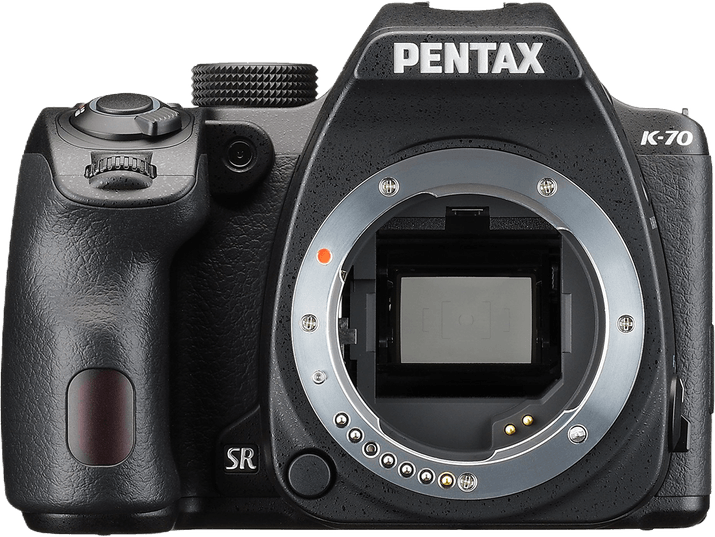
- Rugged, weather-sealed camera body
- Wide ISO range and fantastic low-light performance
- Built-in shake reduction system
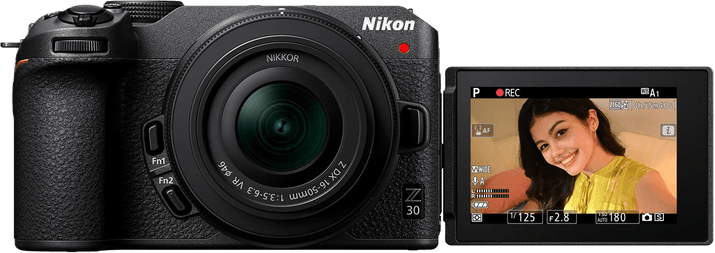
- Fantastic 4K video quality
- Wide ISO range
- Weatherproof compact body
- USB charging
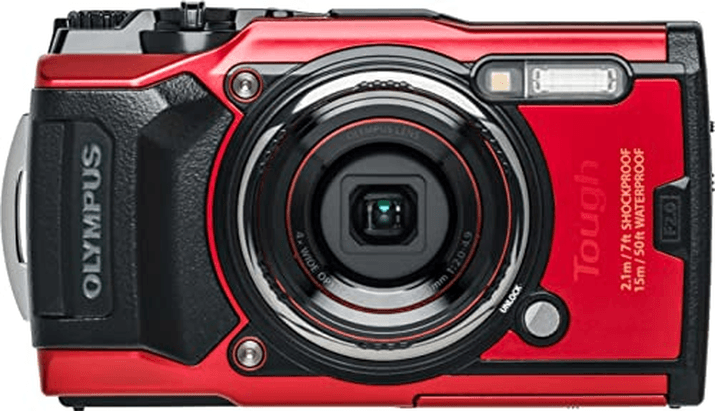
- Completely waterproof for underwater pictures and videos
- Excellent video features for adventure
- Macro shooting modes for nature lovers
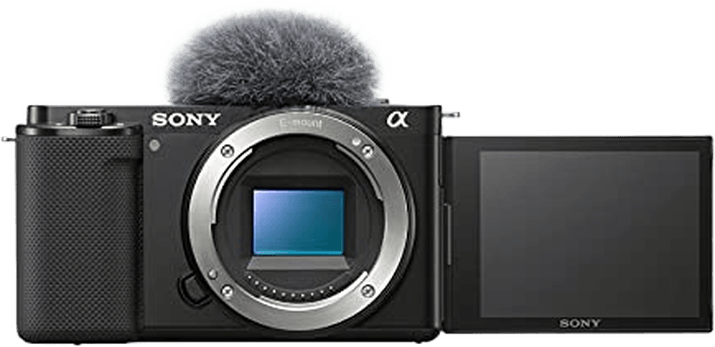
- Brilliant autofocus system for tracking
- No time limit on video recording
- Fully articulating screen for vlogs and selfies
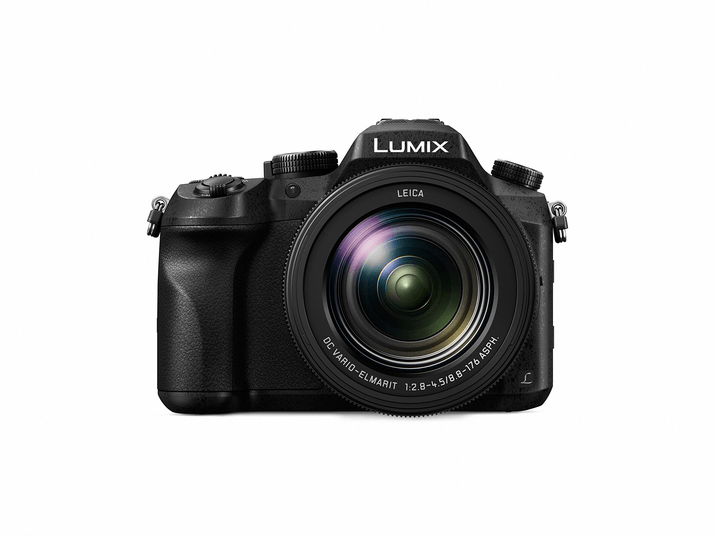
- Built-in 5-axis image stabilization
- Fantastic 4K video quality
- Fixed Leica lens has a 20x Optical zoom
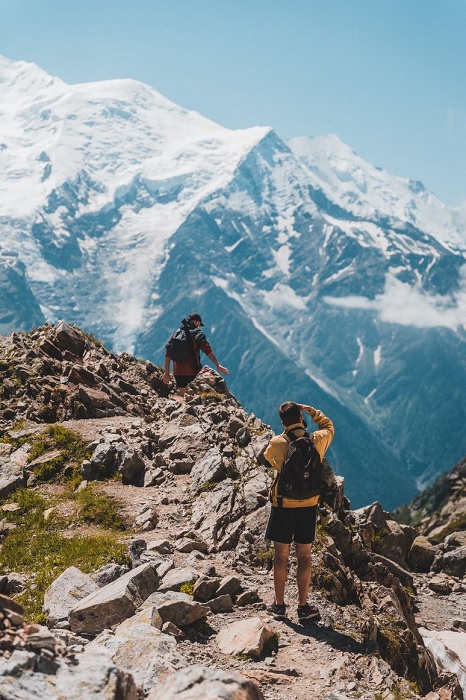
9 Best Lightweight Cameras for Travel and Hiking
Before you pack your bag and set sail, you need to find the perfect camera for hiking and backpacking. We’ve included cameras of all types, like DSLR and mirrorless cameras. Compacts and bridge cameras are also included. There’s a lightweight hiking camera on this list for every traveler.
1. Olympus OM-D E-M5 Mark III

| Camera Type |
Camera Type
|
| Megapixels |
Megapixels
20 MP |
| Sensor Format |
Sensor Format
|
| Sensor Size |
Sensor Size
17.4 x 13 mm
|
| Frame Rate |
Frame Rate
30 fps |
| Autofocus Points |
Autofocus Points
121 |
- 50 MP High Res Shot mode
- 30 fps continuous shooting speed
- Up to 6.5 stops of in-body stabilization with certain lenses
- Excellent weather sealing
- Articulating screen for angled shots
- Excellent 4K Ultra HD and DCI video
- Only 10 fps with AF tracking
- Complicated Olympus menus
- No headphone out
- No video log profile for dynamic range or colors
- An average battery life
The Olympus OM-D E-M5 Mark III is the perfect camera for hiking and traveling. It’s compact and lightweight. But it’s also rugged and packed full of fantastic features for photos and videos. The E-M5 Mark III has everything you’d expect from the best cameras for travel.
The Olympus OM-D E-M5 Mark III is a micro four thirds (MFT) camera. It’s a mirrorless machine but uses a smaller sensor than an APS-C or full frame camera. You don’t have to worry about the image quality. The MFT sensor still gives you fabulous images with a resolution of 20 MP. That’s far better than any smartphone camera.
If 20 MP isn’t enough, the camera has a 50 MP High-Res Shot mode. You’ll need a tripod for this type of shot. But it gives you incredible images with fantastic detail and vibrant colors. It’s ideal for landscape photography.
The autofocus system is another highlight of this travel camera. It uses 121 cross-type phase detection points. It’s fast and accurate. And it tracks moving subjects across the screen. It’s a great feature if you want to try wildlife photography or shoot mountain sports.
The video specs are just as impressive. You get 4K video quality. And you can select a frame rate of 24, 25, or 30 fps. It has a port for external microphones. And there’s 5-axis image stabilization that reduces camera shake in video and photos.
The Olympus OM-D E-M5 Mark III is weather sealed for tough conditions. It has an accurate electronic viewfinder. And there’s a 30 fps burst with pro capture mode. The USB charging is another handy feature for travelers.
2. Canon EOS M50 Mark II

| Camera Type |
Camera Type
|
| Megapixels |
Megapixels
24 MP |
| Sensor Format |
Sensor Format
|
| Sensor Size |
Sensor Size
14.9 x 22.3 mm
|
| Frame Rate |
Frame Rate
10 fps |
| Autofocus Points |
Autofocus Points
143 |
- Strong sensor resolution
- 4K and Full HD video options
- Time-lapse recording
- External mic port
- Webcam functionality
- 4K video is cropped
- No environmental sealing
- No sensor-shift image stabilization
- Disappointing battery life
Mirrorless cameras don’t come much more compact than the Canon EOS M50 Mark II. It’s a photo and video hybrid, giving you wonderful results with both media. And its small size makes it an ideal hiking camera for your next trip.
The Canon EOS M50 Mark II is an APS-C mirrorless camera. And the image sensor has a resolution of 24.1 MP. That’s decent for a sensor of this size. And with a 100 to 25,600 ISO range, you also get fantastic results in low light.
The video features are why travelers are opting for the M50 Mark II. You can record 4K video at 25 fps. And there’s 120 fps for slow-motion videos when you drop down to Full HD quality. The rotating screen is perfect for travel vloggers. And the camera can double as a webcam with the EOS Utility app.
The autofocus is another positive for the M50 Mark III. It’s great with moving subjects. And the eye detecting and face tracking is another feature for vloggers and selfie-takers. The image stabilization system is a bonus too, reducing camera shake in photos and videos.
The Canon EOS M50 Mark II isn’t weather sealed, so you’ll have to take extra care if the weather turns. But the battery life is reliable. And the features and performance make it an excellent mirrorless camera for traveling.
3. Fujifilm X-T4

| Camera Type |
Camera Type
|
| Megapixels |
Megapixels
26 MP |
| Sensor Format |
Sensor Format
|
| Sensor Size |
Sensor Size
23.5 x 15.6 mm
|
| Frame Rate |
Frame Rate
20 fps |
| Autofocus Points |
Autofocus Points
425 |
- Decent APS-C BSI-CMOS sensor
- A great frame rate of 15 fps
- 6.5 stops of image stabilization
- 4K video (DCI or Ultra HD) up to 60 fps
- A fully articulating rear touchscreen
- 12 Film Simulation modes
- Expensive for an APS-C camera
- Autofocus speed and accuracy depends on the lens and the subject
- Unreliable face and eye detection
- No external battery charger provided
- Limited video recording time
- No subject tracking in video mode
Fujifilm has built a reputation on its APS-C mirrorless cameras. And the Fujifilm X-T4 might be the best of the series. It has a powerful sensor that produces stunning images. And there are plenty of other features to excite travelers and hikers.
The sensor gives you a 26 MP image resolution. That’s impressive for a crop sensor camera. And you get excellent image quality and impressive low-light performance. The 5-axis image stabilization also works hard to keep your photos sharp. You don’t need to worry if you can’t pack your tripod.
The 15 fps burst is a fun feature for capturing the action. And the 4K video quality looks fantastic. There is some cropping when recording 4K video at 60 fps. But you’ll be able to shoot brilliant videos from your trips. And there’s slow-motion in Full HD.
The Fujifilm X-T4 isn’t the smallest mirrorless camera. But it’s still lightweight at 1.33 lb (660 g). The camera body is also rugged and weather sealed for outdoor shooting. It’s a quality camera. And one you should consider for hiking and backpacking.
4. Panasonic Lumix ZS200

| Camera Type |
Camera Type
|
| Megapixels |
Megapixels
20 MP |
| Sensor Format |
Sensor Format
|
| Sensor Size |
Sensor Size
13.2 x 8.8 mm
|
| Frame Rate |
Frame Rate
10 fps |
| Autofocus Points |
Autofocus Points
49 |
- Low price
- Excellent quality 4K video
- Incredibly versatile focal length range
- 5-axis in-body image stabilization
- Unmatched battery life
- High maximum aperture
- Fixed rear screen
- Not weather sealed
- 1.5x 4K crop factor
- AF occasionally hunts in video mode
A compact camera is a great choice for hiking and backpacking. And the Panasonic Lumix ZS200 delivers where it matters, so you don’t make any compromises on media quality. It’s small enough for any pack. And you’ll have impressive photos from your next adventure.
The Panasonic Lumix ZS200 has a 20.1 MP sensor that gives you outstanding photo quality. Compact cameras have suffered from the rise of smartphones. But the photo quality is far superior to anything a smartphone can produce.
Another advantage of the ZS200 is the wonderful fixed lens. It’s a Leica lens, so you don’t have to worry about optical quality. And it also gives you an incredible 15x zoom. That’ll get you close to the action no matter where you are.
You’ll have a pleasant surprise from the video quality too. It’s 4K video shot at a super-smooth 30 fps. And the Lumix 4K Photo mode allows you to select single frames from video footage to use as photos. That means you have a burst speed of 30 fps. You won’t miss a thing from your next hike.
You might not expect 5-axis image stabilization from a compact camera. But the Panasonic Lumix ZS200 is full of surprises. And the stabilization works well, keeping your images crisp and clear. You also have Wi-Fi connectivity for easy transfer and sharing when you’re on the road.
5. Pentax K-70

| Camera Type |
Camera Type
|
| Megapixels |
Megapixels
24 MP |
| Sensor Format |
Sensor Format
|
| Sensor Size |
Sensor Size
23.5 x 15.6 mm
|
| Frame Rate |
Frame Rate
6 fps |
| Autofocus Points |
Autofocus Points
11 |
- Brilliant low-light performance with a wide ISO range
- Excellent image quality and sensor
- Built-in image stabilizer reduces camera shake
- High-quality pentaprism viewfinder
- Durable body with full weather sealing
- Limited AF system for fast-moving subjects
- Slow buffering when shooting in RAW
- Slow max burst speed of 6 fps
- Poor connecting Wi-Fi app
- Only Full HD video, no 4K recording
You can’t go wrong with a Pentax K-70 if you’re looking for a tough camera for travel and hiking. Pentax is known for its hardworking cameras. And the Pentax K-70 is a durable and affordable option for travelers. DSLR cameras don’t come much tougher.
This DSLR camera has a durable body. It’s dustproof and completely weather sealed, making it a fantastic option for hiking and backpacking. It isn’t the most lightweight camera on the list. But it still weighs under 2 lb (900 g). And you know it can take the strain of the hiking lifestyle.
The inside of the K-70 is just as impressive as the outside. The APS-C sensor has a resolution of 24.2 MP, so you can expect fabulous image quality. And the dynamic range is excellent for a camera at this level.
The low-light performance is another strength of the Pentax K-70. You get a wide ISO range starting at 100 and topping out at an impressive 204,800. That gives you options for dawn, dusk, and night photography. You might experience some digital noise. But not until you reach the higher ISO levels.
The Pentax K-70 also has a shake reduction mechanism. It counteracts camera shake when shooting handheld, keeping your photos sharp. This gives you more shooting options, allowing you to use a slower shutter speed without the risk of blurry images.
The durability and performance of the Pentax K-70 put it on our list of the best cameras for hiking. It’s a beginner-friendly DSLR camera. But the photography performance is fantastic, especially in low light. Photographers won’t find many better-suited DSLR cameras for traveling and hiking.
6. Nikon Z30

| Camera Type |
Camera Type
|
| Megapixels |
Megapixels
20 MP |
| Sensor Format |
Sensor Format
|
| Sensor Size |
Sensor Size
23.5 x 15.7 mm
|
| Frame Rate |
Frame Rate
11 fps |
| Autofocus Points |
Autofocus Points
209 |
- Compact and lightweight body
- Responsive and accurate AF with eye detection and tracking
- Wide ISO range with excellent low-noise performance at the top end
- Vari-angle screen is perfect for videos and vlogging
- Environmental sealing for outdoor shoots
- Has no viewfinder, only an LCD screen
- No electronic shutter for quicker burst or silent shooting
- Video is cropped 1.3x when using the electronic vibration reduction system
- The battery life is disappointing for a Nikon camera
Modern photographers look at the video specs just as much as the photography specs. Video content is becoming more and more popular. And it’s no different if you want a backpacking camera. The Nikon Z30 is the vlogging solution for travelers and hikers.
The APS-C sensor has a resolution of 20.9 MP. That’s not record-breaking for a lens of that size. But it’s a vast improvement on smartphone cameras. And you get a strong ISO range for low-light photography. It starts at 100 ISO, and the top is expandable to 51,200.
But most people looking at the Nikon Z30 will be interested in the video features. And there’s a good selection of them. You get fantastic 4K video quality. The autofocus has eye detection and face tracking. And there’s image stabilization, so your footage is smooth when shooting from hand.
The Nikon Z30 has other features backpacking vloggers will appreciate. There’s Wi-Fi connectivity and remote shooting. You have a rotating screen for selfies and self-recording. And there’s a record light that tells you when it’s filming. The USB charging is another handy feature when you’re on the move.
Hikers will be happy to hear the Nikon Z30 is weather sealed for outdoor protection. And it’s the smallest and lightest camera in Nikon’s Z series. It’s the perfect size for hiking and backpacking. And you don’t need to break the bank for this vlogging camera.
7. Olympus Tough TG-6

| Camera Type |
Camera Type
|
| Megapixels |
Megapixels
12 MP |
| Sensor Format |
Sensor Format
|
| Sensor Size |
Sensor Size
6.17 x 4.55 mm
|
| Frame Rate |
Frame Rate
20 fps |
| Autofocus Points |
Autofocus Points
25 |
- Very strong and durable body
- Waterproof to 50 ft (15.5 m)
- RAW file shooting capabilities
- Excellent macro shooting
- Smooth 4K video recording
- Only 12 MP image resolution
- No fully manual controls
- No touchscreen
- Annoying notifications with Wi-Fi app
The Olympus Tough-TG is the best waterproof camera on the market. As the name suggests, it’s a tough camera that’s built for a life in the wild. And it’s not just about the hard outer casing. The photo and video features are excellent too. It’s a perfect compact camera for hiking and adventure.
The Olympus Tough TG-6 is waterproof down to 50 feet (15 m). You can take photos and videos from beneath the waves. It’s also dustproof, shockproof, and crushproof. It’s also usable in temperatures of -10 degrees Celsius. It’s as rugged as they come.
It uses a 1-inch sensor that gives you a 12 MP image resolution. That is low compared to many modern compact cameras. But the detail is fantastic, and it still outperforms your average smartphone. The fixed lens has an 8x zoom. And it has underwater and macro shooting modes.
The video features are excellent for multimedia adventurers. You have 4K video at 30 fps. And you can record Full HD at 120 fps for brilliant slow-motion videos. You’ll have incredible action content from your next backpacking trip.
The Olympus Tough TG-6 has excellent battery life. And the rugged camera is small enough for a big pocket or a pouch in your backpack. The shooting options are fantastic for photos and videos. It has to be on the list of the best cameras for hiking.
8. Sony ZV-E10

| Camera Type |
Camera Type
|
| Megapixels |
Megapixels
24 MP |
| Sensor Format |
Sensor Format
|
| Sensor Size |
Sensor Size
23.5 x 15.6 mm
|
| Frame Rate |
Frame Rate
11 fps |
| Autofocus Points |
Autofocus Points
425 |
- Top-end autofocus system that's great with photo and video
- No time limit on video recording
- Fully articulating screen and selfie modes
- External microphones and headphones ports
- Compact and lightweight camera body
- No sensor-shift stabilization, only a shake reduction system
- Visible rolling shutter effect with tracking shots
- The lack of a viewfinder is disappointing
- 4K video is cropped at 30 fps
Most travelers won’t have enough space in their pack for a Sony full frame mirrorless camera. But the Sony ZV-E10 is a more compact mirrorless camera option. And it’s another excellent choice for video creators and travel vloggers.
The photography performance is fantastic. The APS-C sensor gives you a resolution of 24.2 MP with fantastic detail and color rendering. There’s also an 11 fps burst that gives you action camera options.
The autofocus is one of the highlights of the Sony ZV-E10. It has a 425-point hybrid system that’s fast, reactive, and accurate. It tracks your subject when locked on, ideal for trekking and wildlife. And it performs well in low-light situations. You also have built-in image stabilization.
The 4K video quality is fantastic. The frame rate is smooth and steady. And there’s no pixel binning, so the video quality is just as good as the image quality. One problem is that the video is cropped when you use image stabilization. But you can work within that limit when necessary.
You might not get a chance for livestreaming on your hike. But the Sony ZV-E10 can be used as a webcam with no extra software if you want to go live on your trip. There’s limited weather sealing, so you’ll need to take care in bad conditions. But it’s a lightweight mirrorless camera that shoots amazing photos and videos.
9. Panasonic Lumix FZ2500

| Camera Type |
Camera Type
|
| Megapixels |
Megapixels
20 MP |
| Sensor Format |
Sensor Format
|
| Sensor Size |
Sensor Size
13.2 x 8.8 mm
|
| Frame Rate |
Frame Rate
12 fps |
| Autofocus Points |
Autofocus Points
49 |
- Excellent quality Leica lens
- 5-axis image stabilization
- Solid build quality and large grip
- Good ergonomics
- Stunning 4K video
- Yellows occasionally look greenish
- Noisy JPEGs with high ISOs
- 1.4x crop factor with 4K video
- Not weather sealed
- No USB charging
A bridge camera offers the simplicity of a compact camera with the features of a DSLR camera. The Panasonic Lumix FZ2500 is the perfect example of that blend. And it has all the features to make it a contender for the best lightweight camera for hiking.
The Panasonic Lumix FZ2500 has a 1-inch sensor. While it’s not the biggest sensor, you won’t be disappointed with the image quality. The images are sharp, rich, and vibrant. And the dynamic range is surprisingly good.
Bridge cameras have fixed lenses. And the FZ2500 has one of the best lenses in the division. It’s a Leica lens, so you’ll have no doubts about optical quality. But the 20x optical zoom gives the camera a broad appeal. It changes the possibilities of your photography.
The FZ2500 also has top Panasonic Lumix video features. Along with stunning 4K quality, you have frame rate options and the 4K Post Focus feature. You also get the Lumix 4K Photo that allows you to use single frames as photos. That gives you a burst mode of 30 fps so you don’t miss those fast moments.
The macro shooting modes are ideal for nature enthusiasts. And there are external microphone and headphone ports for more multimedia options. The battery life is more than reliable. And while it’s not completely weather sealed, there is environmental sealing for outdoor photography.
Our Verdict
The Olympus OM-D E-M5 Mark III is our pick as the best lightweight camera for hiking and traveling. The Olympus micro four thirds series lends itself to travel because of the compact nature of the cameras. And the OM-D E-M5 Mark III has fantastic features hikers and backpackers will love.
But you don’t have to go with an MFT camera. You can also go for a mirrorless or DSLR camera. And we’ve included models that specialize in photography and video for modern content creators.

Olympus OM-D E-M5 Mark III
You need to know your lightweight camera is up for a life of hiking, traveling, and backpacking. All the cameras on this list are tough enough and deliver on quality and performance. Now you’re ready to shoot your next adventure.
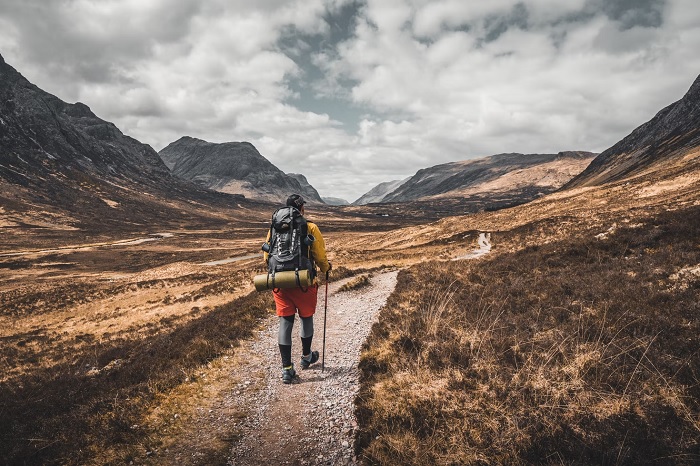
Buying Guide for Lightweight Travel and Hiking Cameras
If you’re unsure of what to look for in a lightweight camera fro travel and hiking, we can help fill in the blanks. Here are some features and specs you’ll want to look out for in a travel camera.
The Camera Body
The size and weight are the first things you need to consider in a travel camera. You don’t want anything that takes up too much space in your pack. And you don’t want your camera to weigh you down. You need a machine that’s compact and lightweight.
You’ll also need something rugged for the road. The best hiking camera is a weather-sealed camera. You never know when the weather can take a turn for the worse. And you don’t want your camera getting damaged in the rain.
Image Quality
Much of a camera’s image quality comes from the sensor resolution. You should look at the number of megapixels the camera sensor has. That will give you an idea of the image quality you can expect from your action camera.
Other features also contribute to image quality. The ISO range will give you an idea of how the camera performs in low light. And an image stabilization system keeps your images sharp. This means you don’t have to pack a tripod.
Video Quality
If you want to make travel and hiking videos, you’ll need a camera that’s up to the job. Most modern cameras have video features. But if you’re serious about videos, you shouldn’t settle for less than 4K video quality. It’ll look professional, and it’ll blow your social media competition out of the water.
What Camera Bag Will You Need?
That depends on the type of camera you choose. If you’re using a compact camera, you can fit it into your pack. Maybe it’ll fit into a big pocket. But if you’re using an interchangeable lens camera, you need a bag that protects the camera and the lenses.
Many travel and hiking photographers opt for camera backpacks. They’re spacious and they’ll protect your gear. And they leave your hands free for other essential tasks.
We recommend you try out our camera comparison feature or our article on budget travel cameras next!

